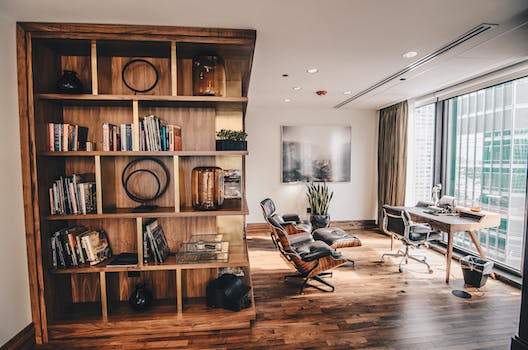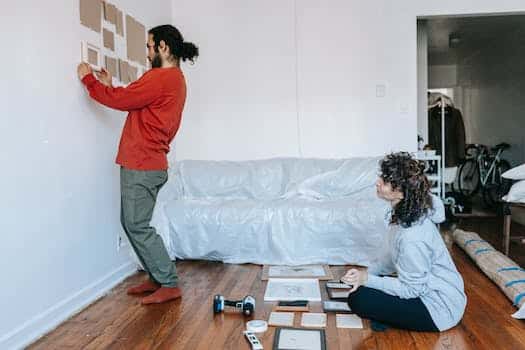Painting furniture can be a fun and creative way to transform the look of your space. Whether you’re a beginner or an experienced DIY enthusiast, these 10 essential tips for painting furniture will help you achieve professional-looking results. From prepping the surface to choosing the right paint and applying the finishing touches, this article will guide you through the process, ensuring your painted furniture looks fantastic and lasts for years to come.
- 1. Preparation
- 1.1. Gather the necessary tools
- 1.2. Choose the right location
- 1.3. Protect the surrounding area
- 1.4. Clean and sand the furniture
- 1.5. Apply a primer
- 2. Painting Techniques
- 2.1. Use even brush strokes
- 2.2. Apply multiple thin coats
- 2.3. Allow sufficient drying time
- 2.4. Consider using a paint sprayer
- 2.5. Apply a topcoat for durability
- 3. Finishing Touches
1. Preparation
Preparing the furniture before painting is crucial to ensure a smooth and successful project. Here are 10 essential tips to help you get your furniture ready:
1. Clean the surface: Remove any dust, dirt, or grime from the furniture using a mild soap and water solution. This will ensure that the paint adheres properly.
2. Sand the furniture: Use sandpaper to lightly sand the surface of the furniture. This helps to remove any rough spots and creates a slightly rough texture, allowing the paint to adhere better.
3. Fill in any holes or cracks: If there are any holes or cracks in the furniture, use wood filler to fill them in. Once dried, sand the filled areas to smoothen them.
4. Remove hardware: If there are any knobs, handles, or other hardware on the furniture, remove them before painting. This will make the painting process easier and allow you to paint evenly.
5. Tape off areas: If there are any parts of the furniture that you don’t want to paint, such as drawers or legs, use painter’s tape to cover them up. This will create clean lines and prevent any accidental paint drips.
6. Prime the furniture: Apply a coat of primer to the furniture. Primer helps the paint to adhere better and provides a smoother finish. Choose a primer that is suitable for the type of paint you will be using.
7. Choose the right paint: Select a paint that is specifically formulated for furniture. There are various types of paints available, such as latex, chalk paint, or oil-based paint. Consider the finish you want to achieve and the durability required.
8. Use the right tools: Invest in high-quality brushes and rollers that are designed for furniture painting. Good tools will help you achieve a professional-looking finish.
9. Apply thin coats: Instead of applying a thick coat of paint, apply several thin coats. This allows for better adhesion and prevents drips and unevenness.
10. Let it dry and cure: Allow each coat of paint to dry completely before applying the next one. Once all coats are applied, let the furniture cure for the recommended time before using or moving it.
By following these preparation tips, you can ensure that your painted furniture project turns out beautifully and lasts for a long time.
1.1. Gather the necessary tools
Before you start painting furniture, it is important to gather the necessary tools and materials. Having the right equipment will make the process much smoother and ensure a professional-looking result. Here are 10 essential tips for preparing your tools before painting furniture:
1. Sandpaper: Get a variety of grits, including coarse, medium, and fine, to properly prepare the surface for painting.
2. Tack cloth: This sticky cloth is used to remove any dust or debris from the furniture before painting.
3. Primer: Choose a high-quality primer that is suitable for the type of furniture you are painting. It helps the paint adhere better and provides a smooth base.
4. Paint brushes: Invest in good quality brushes of different sizes for different areas and details of the furniture.
5. Paint rollers: Use rollers for larger surfaces to achieve a more even and efficient application of paint.
6. Paint trays: These are essential for holding and mixing the paint while you work.
7. Painter’s tape: Use painter’s tape to protect any areas you don’t want to paint, such as hardware or edges.
8. Drop cloths: Cover the surrounding area with drop cloths to protect it from any spills or splatters.
9. Paint: Choose a high-quality paint that is suitable for the type of furniture you are painting. Consider the finish and color you desire.
10. Cleaners and solvents: Depending on the condition of the furniture, you may need cleaners or solvents to remove any existing paint, stains, or coatings.
By gathering these essential tools and materials, you will be well-prepared to tackle your furniture painting project with confidence and achieve professional results.
1.2. Choose the right location
Choosing the right location for painting furniture is crucial to ensure a successful outcome. Here are some important tips to consider during the preparation phase:
1. Adequate ventilation: Find a well-ventilated area to avoid inhaling fumes and to allow proper drying of paint.
2. Weather conditions: Avoid painting outdoors on a rainy or extremely hot day, as it may affect the drying process.
3. Space availability: Ensure you have enough space to move around the furniture comfortably and access all its sides.
4. Lighting: Make sure the area is well-lit, preferably with natural light, to accurately see the details and ensure even coverage.
5. Protection: Cover the surrounding floor, furniture, and other items with drop cloths or plastic sheets to prevent accidental paint splatters or spills.
6. Accessibility: Choose a location where you can easily access all the necessary tools, paints, and supplies without any inconvenience.
7. Temperature control: Maintain a moderate temperature in the painting area to facilitate proper drying and avoid any paint-related issues.
8. Cleanliness: Ensure the chosen location is clean and free from dust or debris that may affect the finish of your painted furniture.
9. Disturbance-free: Select a spot where you can work without interruptions or distractions to maintain focus and achieve a professional finish.
10. Safety precautions: Take necessary safety precautions, such as wearing protective goggles, gloves, and a mask, to protect yourself from harmful chemicals and fumes.
By carefully considering these factors and choosing the right location, you can set the stage for a successful furniture painting project.
1.3. Protect the surrounding area
Protecting the surrounding area is a crucial step in preparing for painting furniture. By taking the necessary precautions, you can avoid any accidental spills or splatters that can damage floors, walls, or other nearby objects. Here are some essential tips to protect the surrounding area before starting your furniture painting project:
1. Clear the space: Remove any furniture or decorative items from the vicinity to create ample space for your work. This will prevent any accidental damage to these items and allow you to move freely.
2. Cover the floor: Lay down a drop cloth or plastic sheeting to protect the floor from paint drips or spills. Secure the covering properly to ensure it stays in place throughout the painting process.
3. Shield the walls: Use painter’s tape to protect the walls adjacent to the furniture. Apply the tape carefully, ensuring it adheres well and forms a barrier between the furniture and the walls.
4. Protect hardware and fixtures: If your furniture has any hardware or fixtures that cannot be removed, such as knobs or hinges, cover them with painter’s tape or plastic wrap to prevent them from getting painted.
5. Seal off doors and windows: Close any doors and windows in the room to minimize the chances of dust or debris settling on the freshly painted furniture.
6. Use a tarp or plastic cover: If you have larger furniture pieces that cannot be moved, consider covering them entirely with a tarp or plastic cover to protect them from accidental paint splatters.
7. Consider a makeshift spray booth: If you plan to use a spray paint technique, setting up a temporary spray booth using plastic sheets can help contain the overspray and protect the surroundings.
8. Protect electrical outlets and switches: Safeguard electrical outlets and switches by covering them with painter’s tape. This will prevent any paint from accidentally getting inside and causing potential hazards.
9. Secure light fixtures: If there are any light fixtures near the furniture, make sure they are properly secured and covered to prevent them from getting damaged or accumulating dust.
10. Ventilate the area: Ensure proper ventilation in the room by opening windows or using fans. This will help dissipate any paint fumes and keep the air fresh while you work on your furniture painting project.
By following these essential tips, you can protect the surrounding area and create a safe and controlled environment for your furniture painting endeavor.
1.4. Clean and sand the furniture
Before you start painting furniture, it is important to properly clean and sand the surface. This preparation step is crucial for achieving a smooth and professional-looking finish. Here are some essential tips to follow when cleaning and sanding furniture:
1. Remove any existing paint or finish: If the furniture has an old coat of paint or varnish, it is necessary to strip it off completely. Use a paint stripper or sandpaper to remove the existing finish.
2. Clean the surface: After removing the old finish, wipe down the furniture with a damp cloth to remove any dust or residue. This will ensure that the paint adheres properly to the surface.
3. Fill in any imperfections: If there are any cracks, dents, or holes in the furniture, use wood filler to fill them in. Smooth out the filler with sandpaper once it is dry.
4. Sand the surface: Use sandpaper to lightly sand the entire surface of the furniture. This will help roughen up the surface and create a better bonding surface for the paint.
5. Use the right grit sandpaper: The grit of the sandpaper depends on the condition of the furniture. Start with a medium-grit sandpaper (around 120 to 150 grit) and then move to a finer grit (around 220 grit) for a smoother finish.
6. Sand in the direction of the grain: When sanding, always sand in the direction of the wood grain. This will prevent any scratches or damage to the surface.
7. Remove sanding dust: After sanding, use a tack cloth or a damp cloth to remove any sanding dust. This will ensure a clean surface for painting.
8. Smooth out rough edges: Pay attention to any rough edges or sharp corners on the furniture. Use sandpaper to smooth them out for a polished look.
9. Consider priming: Depending on the type of paint you are using and the condition of the furniture, you may want to apply a primer before painting. This will provide a smooth base and help the paint adhere better.
10. Double-check the surface: Before you start applying paint, inspect the furniture surface to make sure it is clean, smooth, and free from any imperfections. This will ensure a flawless paint job.
By following these essential tips for cleaning and sanding furniture, you will be well-prepared to start painting and achieve professional-looking results.
1.5. Apply a primer
Before you start painting furniture, it is essential to prepare the surface properly. This will ensure better adhesion of paint and a smooth, long-lasting finish. Here are 10 essential tips to help you prepare for the painting process:
1. Clean the furniture: Start by thoroughly cleaning the furniture using a mild soap and water solution. Remove any dirt, grease, or grime from the surface. This will help the paint adhere better.
2. Remove hardware: If the furniture has any hardware such as knobs or handles, remove them before painting. This will make the painting process easier and prevent any accidental paint drips on the hardware.
3. Sand the surface: Use sandpaper to lightly sand the furniture’s surface. This will create a slightly rough texture, allowing the paint to adhere better. Sand in the direction of the wood grain.
4. Fill any imperfections: If there are any cracks, holes, or dents in the furniture, use wood filler or putty to fill them. Smooth out the filler with a putty knife and let it dry completely before sanding.
5. Sand again: After filling any imperfections, sand the surface again to ensure a smooth and even finish. Use a finer grit sandpaper this time to remove any rough patches left by the filler.
6. Dust off: Once you are satisfied with the smoothness of the surface, use a soft cloth or tack cloth to remove any dust or debris. This step is crucial to achieve a flawless paint job.
7. Protect surrounding areas: Cover the floor or any nearby objects with drop cloths or plastic sheets to protect them from accidental paint splatters.
8. Use primer: Applying a primer before painting is highly recommended, especially if the furniture has a glossy or stained surface. Primer helps the paint adhere better and provides a smooth base for the topcoat.
9. Choose the right primer: Select a primer that is suitable for the type of paint you will be using. For example, if you are using latex paint, choose a latex primer. Read the manufacturer’s instructions for proper application.
10. Apply the primer: Use a brush or a roller to apply an even coat of primer to the furniture. Make sure to follow the grain of the wood and cover all surfaces. Allow the primer to dry completely before moving on to the painting process.
By following these preparation tips, you can ensure a successful and professional-looking paint job on your furniture.
2. Painting Techniques
When it comes to painting furniture, having the right techniques can make all the difference in achieving a professional-looking finish. Whether you’re a beginner or an experienced DIY enthusiast, these 10 essential tips will help you enhance your painting skills and create stunning furniture transformations.
1. Prepare the Surface: Before starting any painting project, it’s crucial to prepare the surface properly. This involves cleaning the furniture, sanding any rough areas, and filling in any holes or imperfections.
2. Choose the Right Paint: Selecting the right type of paint is essential for achieving a successful outcome. Consider the material of the furniture and opt for a paint that is suitable for that specific surface.
3. Use Primer: Applying a primer before painting can help improve paint adhesion and create a smoother finish. This is particularly important when working with glossy or previously painted surfaces.
4. Invest in Quality Brushes and Rollers: Using high-quality brushes and rollers can greatly impact the final result. They allow for better paint application, smoother finishes, and reduce the likelihood of streaks.
5. Apply Thin Coats: Instead of applying thick coats of paint, it’s best to apply several thin coats. This ensures better coverage, minimizes drips, and allows for faster drying times.
6. Practice Proper Brush Techniques: To achieve a professional finish, it’s important to use the right brush techniques. Avoid leaving visible brush strokes by using long, even strokes in the direction of the wood grain.
7. Sand Between Coats: For an even smoother finish, lightly sand the furniture between each coat of paint. This helps remove any imperfections, such as brush marks or dust particles.
8. Consider Distressing or Antiquing: If you desire a distressed or antique look, consider using techniques such as sanding edges or applying a glaze to create an aged appearance.
9. Protect with a Clear Topcoat: To protect your painted furniture and make it more durable, it’s recommended to apply a clear topcoat. This provides an extra layer of protection against scratches and stains.
10. Allow Ample Drying Time: Patience is key when painting furniture. Make sure to allow each coat of paint and the final topcoat to dry completely before using or applying additional layers.
By following these essential tips for painting furniture, you’ll be able to transform your pieces and achieve professional-looking results. Remember to practice and experiment with different techniques to find your own unique style.
2.1. Use even brush strokes
Use even brush strokes for section with title Painting Techniques
One of the most important aspects of painting furniture is using even brush strokes. This technique helps to ensure a smooth and professional-looking finish. When applying paint to a piece of furniture, it is important to use long, even strokes in one direction. This will help to prevent streaks and uneven coverage.
To achieve even brush strokes, start by loading your brush with an appropriate amount of paint. Too much paint on the brush can lead to drips and clumps, while too little paint may result in patchy coverage. Hold the brush at a slight angle and apply gentle pressure as you glide it along the surface of the furniture.
When painting large areas, such as tabletops or dresser fronts, it is helpful to work in small sections. This allows you to focus on one area at a time and ensures that the paint is applied evenly. Begin at one edge of the furniture and work your way across, overlapping each stroke slightly to create a seamless finish.
In addition to using even brush strokes, it is also important to maintain a consistent painting technique throughout the entire project. This means applying the same amount of pressure and using the same brush strokes on each section of the furniture. Consistency will help to create a cohesive look and avoid any noticeable variations in the finished piece.
Overall, using even brush strokes is an essential painting technique when it comes to painting furniture. It helps to achieve a professional-quality finish and ensures that the paint is applied evenly. By following this technique and maintaining consistency throughout the project, you can transform your furniture into a beautiful and refreshed piece.
2.2. Apply multiple thin coats
When it comes to painting furniture, one of the most important techniques to master is applying multiple thin coats. This method ensures a smooth and even finish, and helps to prevent drips and brush strokes from showing up on the final result.
To apply multiple thin coats, start by preparing the surface of the furniture. Clean it thoroughly and sand any rough areas. Next, choose a high-quality paint that is suitable for the type of furniture you are working with.
Before applying the first coat, it is recommended to prime the furniture. This will help the paint adhere better and provide a more durable finish. Once the primer is dry, you can start applying the paint.
Using a brush or a roller, apply a thin and even coat of paint to the furniture. Avoid overloading the brush or roller, as this can result in drips and an uneven application. It is better to apply several thin coats rather than one thick coat.
Allow each coat to dry completely before applying the next one. This drying time will vary depending on the type of paint and environmental conditions. Read the paint manufacturer’s instructions for precise drying times.
After each coat is dry, lightly sand the surface with fine-grit sandpaper. This will help smooth out any imperfections and create a better surface for the next coat. Be sure to remove any sanding dust before applying the next coat.
Continue applying thin coats of paint until you achieve the desired coverage and finish. Remember to take your time and be patient. Rushing the process can lead to mistakes and a less professional-looking result.
In conclusion, applying multiple thin coats is a crucial painting technique when it comes to painting furniture. It provides a smoother and more durable finish, and helps to avoid common issues like drips and brush strokes. By following these steps and being diligent in your approach, you can achieve professional-looking results and transform your furniture into a beautiful and refreshed piece.
2.3. Allow sufficient drying time
Allow sufficient drying time for painting furniture is crucial to ensure a successful and long-lasting finish. Rushing the drying process can result in smudges, smears, or even damage to the painted surface. Here are some tips to help you allow sufficient drying time for your furniture painting project:
1. Follow the paint manufacturer’s instructions: Different types of paint may require different drying times. Always refer to the instructions provided by the paint manufacturer for the recommended drying time.
2. Consider the temperature and humidity: Both temperature and humidity can affect the drying time of paint. Choose a well-ventilated area with moderate temperature and low humidity to speed up the drying process.
3. Thin coats: Apply thin coats of paint instead of thick layers. Thin coats dry faster and more evenly, reducing the overall drying time.
4. Allow proper ventilation: Good airflow helps paint to dry faster. Open windows or use fans to create a well-ventilated environment.
5. Avoid rushing: Patience is key when it comes to allowing sufficient drying time. Avoid touching or moving the painted furniture until it is completely dry to prevent any accidental damage.
6. Test the dryness: Gently touch a small, inconspicuous area of the painted furniture to check if it is dry. If it feels tacky or leaves marks, it needs more time to dry.
7. Follow the recoat time: If you are planning to apply multiple coats of paint, make sure to follow the recommended recoat time. This allows each layer to dry properly before applying the next.
8. Consider drying aids: There are various drying aids available in the market that can help speed up the drying process. These include drying agents, heat lamps, or infrared heaters. Follow the instructions carefully when using such aids.
9. Be mindful of curing time: Drying time and curing time are not the same. While the paint may feel dry to the touch, it still needs time to cure fully. Avoid placing any objects or heavy items on the painted furniture until it has fully cured.
10. Plan ahead: Before starting your furniture painting project, consider the time required for drying and curing. Allow sufficient time in your schedule to ensure the best results and avoid any unnecessary rush.
2.4. Consider using a paint sprayer
Consider using a paint sprayer for painting furniture. Paint sprayers provide a smooth and even finish, allowing you to achieve professional-looking results. They are especially useful when working with intricate or detailed furniture pieces, as they can easily reach tight corners and crevices. Additionally, using a paint sprayer can save you time and effort compared to using a brush or roller. However, it is important to note that paint sprayers require proper technique and preparation. Make sure to practice using the sprayer on a test surface before painting your furniture and always follow the manufacturer’s instructions. By using a paint sprayer, you can achieve a flawless finish and transform your furniture into a stunning centerpiece.
2.5. Apply a topcoat for durability
Applying a topcoat is crucial for ensuring the durability of painted furniture. A topcoat acts as a protective layer, preventing the paint from chipping, cracking, or fading over time. It also adds a smooth and glossy finish to the furniture, enhancing its overall appearance.
To apply a topcoat, follow these steps:
1. Choose the right type of topcoat for your project. There are various options available, such as polyurethane, varnish, lacquer, or wax. Consider factors like the type of paint used and the desired finish.
2. Prepare the furniture by cleaning it thoroughly and removing any dirt, dust, or grease. This ensures proper adhesion of the topcoat.
3. Sand the surface lightly with fine-grit sandpaper to create a smooth base. Wipe away any sanding residue before proceeding.
4. Stir the topcoat thoroughly to mix it well. Avoid shaking the can, as it can introduce air bubbles.
5. Using a high-quality brush or a foam roller, apply a thin and even coat of the topcoat to the furniture. Work in small sections, starting from the top and moving downward.
6. Allow the first coat to dry completely as per the manufacturer’s instructions. This may take a few hours or overnight.
7. Once dry, lightly sand the surface with fine-grit sandpaper to smooth out any imperfections. Wipe away the sanding residue.
8. Apply a second coat of the topcoat in the same manner as the first. This helps to build up the protective layer.
9. Let the second coat dry completely. Depending on the type of topcoat used, multiple coats may be necessary for optimal durability.
10. After the final coat, allow the furniture to cure for the recommended time before using it. This ensures that the topcoat has fully hardened and provides maximum protection.
By following these steps and applying a topcoat, you can significantly increase the longevity and durability of your painted furniture, allowing it to withstand daily use and maintain its beautiful finish for years to come.
3. Finishing Touches
Once you have completed the main steps of preparing and painting your furniture, it’s time to add the finishing touches. These final details can make a big difference in the overall look and durability of your painted piece. Here are 10 essential tips to consider when applying the finishing touches to your painted furniture:
1. Sanding: After the paint has dried, lightly sand the surface with fine-grit sandpaper to smooth out any imperfections and create a smooth finish.
2. Sealing: Apply a coat of clear sealer or polyurethane to protect the painted surface from scratches and stains. This will also give your furniture a nice sheen.
3. Distressing: If you want to achieve a vintage or shabby chic look, consider distressing certain areas of the furniture by lightly sanding or using a sanding block to reveal the underlying wood or previous layers of paint.
4. Waxing: Apply a layer of furniture wax to add a protective and lustrous finish to your painted furniture. This will also enhance the color and depth of the paint.
5. Glazing: For a more decorative look, consider applying a glaze over the painted surface. This will add depth and dimension to your furniture, especially if you choose a contrasting color for the glaze.
6. Hardware: Replace or update the hardware on your furniture for a fresh and polished look. Choose knobs, handles, or pulls that complement the style and color of your painted piece.
7. Touch-ups: Inspect the furniture for any areas that may need touch-ups. Use a small brush to carefully apply paint to those spots and blend it seamlessly with the rest of the surface.
8. Cleaning and maintenance: Once your painted furniture is complete, make sure to clean it regularly with a mild soap and water solution. This will help preserve the finish and keep it looking its best.
9. Protection: Use furniture pads or coasters to protect the painted surface from scratches and heat. Avoid placing hot or wet items directly on the furniture.
10. Display and enjoy: Finally, find the perfect spot to display your newly painted furniture and enjoy the transformation it brings to your space. Whether it’s a bold statement piece or a subtle accent, your painted furniture is now ready to be admired.
3.1. Sand the painted surface lightly
To achieve a smooth and professional finish on your painted furniture, it is important to sand the painted surface lightly. Sanding helps to remove any imperfections, roughness, or brush strokes that may be present on the surface. It also helps the paint adhere better and creates a smooth canvas for the final coat of paint.
Before sanding, make sure the paint is completely dry. Use a fine-grit sandpaper or sanding block to gently sand the surface in a circular motion. Be careful not to apply too much pressure, as it can damage the underlying wood or previous layers of paint.
Focus on areas that may have drips, bumps, or unevenness. Sanding will help level out these imperfections and create a more uniform surface. After sanding, wipe away any dust or debris with a clean cloth or tack cloth.
Remember, the goal of sanding is to create a smooth and even surface, so take your time and be thorough in this step. It will greatly contribute to the overall quality and appearance of your painted furniture.
3.2. Add decorative details or distressing
When it comes to painting furniture, adding decorative details or distressing techniques can be the perfect finishing touches. These techniques can elevate the overall look of your piece and give it a unique, customized appearance. Whether you prefer a vintage, shabby chic style or a more modern, sleek look, incorporating decorative details or distressing can add depth and character to your furniture.
One popular method is to use decorative stencils or stamps to create patterns or designs on your furniture. This can be done using paint or a contrasting color for a more eye-catching effect. Stencils are available in a wide variety of designs, from intricate floral patterns to geometric shapes, allowing you to choose a style that suits your personal taste.
Another option is to distress your furniture using sandpaper or a sanding block. This technique involves intentionally sanding certain areas of the piece to create a worn, vintage look. You can focus on corners, edges, or other areas that would naturally wear over time. The key is to sand lightly and gradually build up the desired effect, ensuring you don’t go overboard and damage the furniture.
For a more subtle touch, consider using glazes or waxes to add depth and dimension to your painted furniture. Glazes can be applied over the base coat of paint to create an aged or antique appearance. They can also be used to highlight decorative details or create a faux wood grain effect. Waxes, on the other hand, can be used to give your furniture a soft sheen and protect the paint finish.
Incorporating decorative details or distressing techniques can truly transform your painted furniture into a one-of-a-kind piece. Whether you choose to add intricate stenciled designs, create a distressed vintage look, or enhance the depth with glazes and waxes, these finishing touches will make your furniture stand out and reflect your personal style.
3.3. Apply a clear protective finish
When it comes to painting furniture, applying a clear protective finish is an essential step that should not be overlooked. This final touch helps to seal and protect the painted surface, ensuring its longevity and durability.
To apply a clear protective finish, follow these simple steps:
1. Choose the right finish: There are various types of protective finishes available, such as polyurethane, varnish, or wax. Consider the type of furniture and the desired sheen before selecting the appropriate finish.
2. Prepare the surface: Before applying the protective finish, make sure the painted surface is clean, dry, and free from any dust or debris. Sanding the surface lightly can help create a smooth and even base.
3. Test in an inconspicuous area: It is always a good idea to test the protective finish in a small, inconspicuous area of the furniture to ensure compatibility and desired results.
4. Apply in thin coats: Using a high-quality brush or foam applicator, apply the protective finish in thin and even coats. Avoid overloading the brush to prevent drips or uneven application.
5. Follow the grain: When applying the protective finish, always follow the direction of the wood grain for a seamless and professional-looking finish.
6. Allow proper drying time: Each coat of protective finish needs sufficient drying time as specified by the manufacturer. Avoid rushing the process to ensure a durable and flawless finish.
7. Sand between coats: For an ultra-smooth finish, lightly sand the surface between each coat of protective finish. This helps to remove any imperfections and promotes better adhesion.
8. Remove dust particles: Before applying subsequent coats, use a tack cloth or a soft, lint-free cloth to remove any dust particles that may have settled on the surface.
9. Apply multiple coats: Depending on the desired level of protection, apply multiple coats of the protective finish. Each additional coat enhances the durability and longevity of the painted furniture.
10. Cure and protect: After the final coat has been applied, allow the protective finish to cure fully as recommended by the manufacturer. Once cured, the furniture is ready to be enjoyed and can be further protected by using coasters or felt pads to avoid scratches and moisture damage.
By following these essential tips, you can ensure that your painted furniture not only looks beautiful but also remains protected and durable for years to come.
3.4. Reattach hardware and accessories
After the paint has dried completely, it’s time to reattach the hardware and accessories to your painted furniture. This final step adds the finishing touches and brings the piece back to its original functionality.
Start by locating all the screws, knobs, handles, or any other hardware that you removed before painting. If you have kept them organized, it will be much easier to find the corresponding pieces for each section of the furniture.
Using a screwdriver or the appropriate tool, carefully attach the hardware back to the furniture. Make sure to tighten them securely, but be cautious not to overtighten and damage the newly painted surface.
For accessories such as decorative knobs or pulls, align them properly and screw them in place. Take your time to ensure they are straight and level, as this small detail can greatly enhance the overall appearance of the furniture.
Once everything is reattached, take a step back and admire your newly painted and assembled furniture. It’s now ready to be placed back in its designated spot, adding a fresh and revitalized look to your space.
3.5. Clean up and dispose of materials
When you have completed painting your furniture, it is important to clean up and dispose of materials properly. Follow these steps to ensure a smooth finish and maintain a tidy workspace.
1. Clean your brushes and rollers immediately after use. Use warm soapy water for water-based paints and mineral spirits for oil-based paints. Rinse thoroughly and let them air dry.
2. Dispose of paint cans and containers responsibly. Check with your local recycling or hazardous waste facility for guidelines on how to properly dispose of paint and paint-related materials.
3. Wipe down your work area and remove any paint splatters or spills. Use a damp cloth or sponge to gently clean the surfaces.
4. Store any leftover paint in airtight containers for future touch-ups or projects. Label the containers with the color and type of paint for easy identification.
5. Properly seal and store any unused paintbrushes or rollers. Wrap them tightly in plastic wrap or aluminum foil to prevent them from drying out.
6. Dispose of any paint thinner or solvents according to local regulations. These substances can be hazardous and should not be poured down the drain.
7. Dispose of any painter’s tape or masking tape properly. Remove it carefully from the furniture without causing damage and discard it in the appropriate waste bin.
8. Clean your workspace thoroughly, including any drop cloths or protective coverings. Shake them out outside to remove any loose debris and fold them neatly for future use.
9. Wash your hands and any other exposed skin with soap and water to remove any paint residue. Use a gentle scrub brush for stubborn stains.
10. Finally, take a moment to admire your newly painted furniture and enjoy the satisfaction of a job well done!
Conclusion
In conclusion, painting furniture can be a rewarding and creative project. By following these 10 essential tips, you can achieve professional-looking results and transform your furniture into beautiful pieces. From proper preparation to choosing the right paint and techniques, these tips will ensure a successful furniture painting endeavor. So, get your brushes ready and start transforming your old furniture into stunning new additions to your home!






These 10 innovative and imaginative DIY home decor ideas from [object Object] provide a refreshing approach to enhancing ones living…